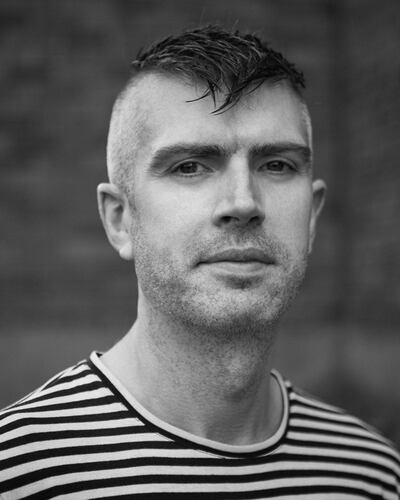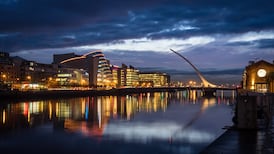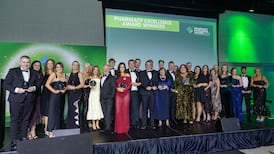Experiential marketing doesn’t just connect with those who experience it. Content amplification makes its reach immense. But it’s all down to how brands show up around these experiential events or activations. Headcase Marketing founder Andrew Casey tells Dentsu’s Dave Winterlich in this week’s Inside Marketing podcast.
Headcase Marketing is a creative activations company that works with agencies, brands, organisations and public bodies, using experiences, events and storytelling to forge a meaningful connection with audiences.
It was founded 17 years ago by Casey and his business partner – and former bandmate – Olaf O’Moore. Together they’ve enjoyed a number of entrepreneurial iterations along the way, from Funked Up Fixies, a bicycle etailer; to Ecocabs, pedal-powered taxis whose drivers doubled up as brand ambassadors.
The latter was the duo’s first foray into experiential marketing and ultimately evolved into Headcase, which today spans the gamut of experiential activations, from urban art murals to guerrilla marketing.
READ MORE
“With Ecocabs, essentially we were creating an experience, which led us into experiential marketing, which itself became bigger. Then story telling came in, and content and content production, so we moved more into that. Then we were involved in street art,” he says.
“We were in a kind of a cultural space where we were learning a lot and seeing how that could apply to this industry, which was also evolving a lot. When we started for example, social didn’t even exist. So we just evolved as the industry was evolving.”
Ultimately they fetched up right in the zeitgeist.

The power of culture
“The power of culture, authenticity, storytelling, and experience – all the things we were doing since day one – are the things that brands and audiences crave the most. So while what we do now feels so different from what we did at the start, the underlying values are the same.”
Since Covid, people’s desire to connect – which experiential marketing provides – has intensified, leaving audiences with both a greater desire to be social, and a greater appreciation of brands that facilitate it, he says.
“It has left a huge opportunity for brands to re-engage in this space, and to do so in a more effective way,” says Casey.
The pandemic also left us with a craving for authenticity, he adds. But the question for brands is: how to show it?
“Facebook isn’t going to do it,” he says. But connecting with audiences in real life, in a meaningful way, is.
“That’s not to say every experiential campaign or brand event needs to bring us together physically, but it must lend itself to an authentic connection, because authentic and meaningful connections are the ones that leave lasting memories,” he says.
“Pictures in your mind don’t disappear, and if you capture that right, it leads to brand loyalty, which is the holy grail.”
The power of a great event lies not just in the enjoyment of those who were there, but in all those who relate positively to it as you amplify it across various platforms.
It is why good experiential should not be an afterthought to the media plan, or a bolt on, but a central part.
With purpose
“Sometimes where it falls down is that it is seen as a nice-to-have, or something that will be fun, but not treated as what it can be, which is a strategic centre point around which to build a powerful amplification plan, a social plan,” says Casey.
“There could be 200 people at an event but two million people who ultimately see it, who wish they had been there but respect and love and appreciate the brand more because of what it did.”
Experiential’s real power, however, is why it took place in the first place. Purpose is key.
“No one wants an event where it’s just a brand showing up and saying, I’m great. That’s not going to be talked about by others. With great experiential there has to be a purpose for the brand showing up in the first place. It’s about why they are there, what it is giving and what the audience is getting from it. Ultimately it’s about the why of it. Are we showing up for people in a meaningful way?”
That’s not to say it has to be charitable, or even that deep. Recent Headcase successes include campaigns for the HSE about sexual health, raising awareness and prevention of sexually transmitted infections.
It has also helped initiate conversations on social around sexuality and pleasure, which helped make condom maker Durex become part of “cultural conversation”, he says.
Durex’s “If it doesn’t fit right it doesn’t feel right” poster campaigns, which featured posters too big for their frames, were particularly eye catching.
“The mission there was to drive conversation about sex and pleasure in Ireland and stigma change about sex positivity, which is a very Irish thing. For people to feel comfortable in their skin no matter what community they associate with is a really important cultural thing,” he says.
Meaningful connections
The work the agency has done for clients centring on Pride Festival has been similarly successful in helping brands to grow their categories while also “showing up in a meaningful way to a community that needs support and representation,” he says.
The big difficulty that experiential has is not in its creative and engaging executions, however. It lies in identifying the metrics that measure return on investment. Sentiment and feeling are notoriously hard to gauge.
Headcase takes soundings via interviews both during and post event, but ultimately the endemic short-termism of the advertising and marketing industry does a disservice to a form of marketing that captures hearts and minds, not eyeballs and clicks.
“I understand it, and okay, so if on those certain KPIs like reach for example, I’ve under delivered,” he says. “But look over here – I’ve created these ones maybe around depth of engagement that are going to last and build into the future.”
Catch the latest episode of Inside Marketing
To read more visit irishtimes.com/tags/insidemarketing-advertisingfeature/













